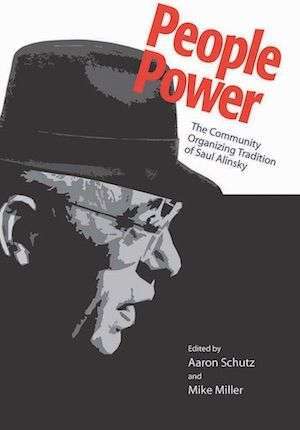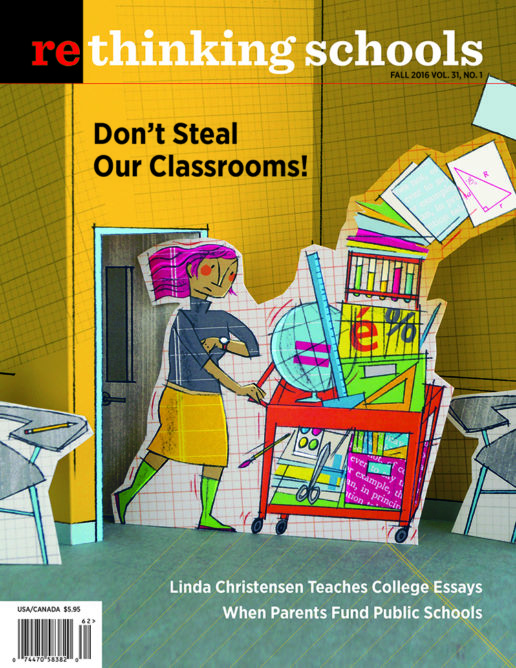Saul Alinsky Lives!

People Power: The Community Organizing Tradition of Saul Alinsky
Edited by Aaron Schutz and Mike Miller
Vanderbilt University Press, 2015
Fifteen years ago, I was part of a community organizing effort that led to the founding of June Jordan School for Equity (JJSE) in San Francisco. The relationships we built and the lessons I learned about people coming together to wield real power are unforgettable. Our work was guided by the San Francisco Organizing Project, based on the organizing principles of Saul Alinsky.
Alinsky was one of the most significant U.S. community organizers of the 20th century. He started his work in Chicago’s Back of the Yards neighborhood in the late 1930s, building grassroots power in what he called “the nadir of all slums in America.” By the 1960s, Alinsky was influential in the formation of people’s organizations ranging from the Black power organization FIGHT in Rochester, New York, to the United Farm Workers in California. They started national networks, including the Pacific Institute for Community Organizations (of which the San Francisco Organizing Project is a member) and the Industrial Areas Foundation (IAF), which today bring together thousands of religious congregations, civic organizations, and unions to drive positive community change.
In People Power: The Community Organizing Tradition of Saul Alinsky, editors Mike Miller and Aaron Schutz have gathered dozens of primary documents and interviews from the 1960s to the 1990s that explain why Alinsky was such an important figure. Miller, who worked with Alinsky, writes that he “was a small ‘d’ democrat who knew that if people were to participate effectively in a democracy, they had to have the latent power of their numbers brought forth.”
When we were planning JJSE, we built relationships, across race and class, among teachers, parents, and youth. Hundreds of families wanted a school that was community-based and focused on justice. But for nearly a year we could not get a single meeting with the district superintendent. Alinsky’s tactics showed us how to translate those relationships into power. As Miller explains, Alinsky believed “if decision makers in the power structure wouldn’t meet or engage in good-faith negotiations, organized people could use their numbers . . . to force such negotiations.” So we announced that we were hosting a public event with 250 people and three school board members to discuss our proposed school—and suddenly we had three meetings with the superintendent in two weeks.
Alinsky’s ideas also influenced the kind of school we created. He saw organizers and teachers as similar in many ways, writing that an organizer was “a special kind of educator, one who did his education within the experience of the people with whom he was working.” IAF organizer Dick Harmon expanded on this theme: “Organizing is teaching . . . which rests on people’s life experiences, drawing them out, developing trust, going into action, disrupting old perceptions of reality, developing group solidarity, watching for the growth of confidence to continue to act, then sharing in the emotional foundation for continual questioning of the then-current status quo.” At JJSE, we view teaching through this organizing lens, creating classrooms where students build communities around strong values, understand how oppression works, and develop the skills they need to fight for positive change. One of our major efforts at JJSE now is hiring alumni and other working-class San Franciscans to staff the school.
Speaking from our experience at JJSE, there is a lot to learn from Alinsky’s work. People Power is a fascinating collection of documents, most of which were passed informally among community organizers and never previously published. It’s an important resource for teachers as well as organizers.

